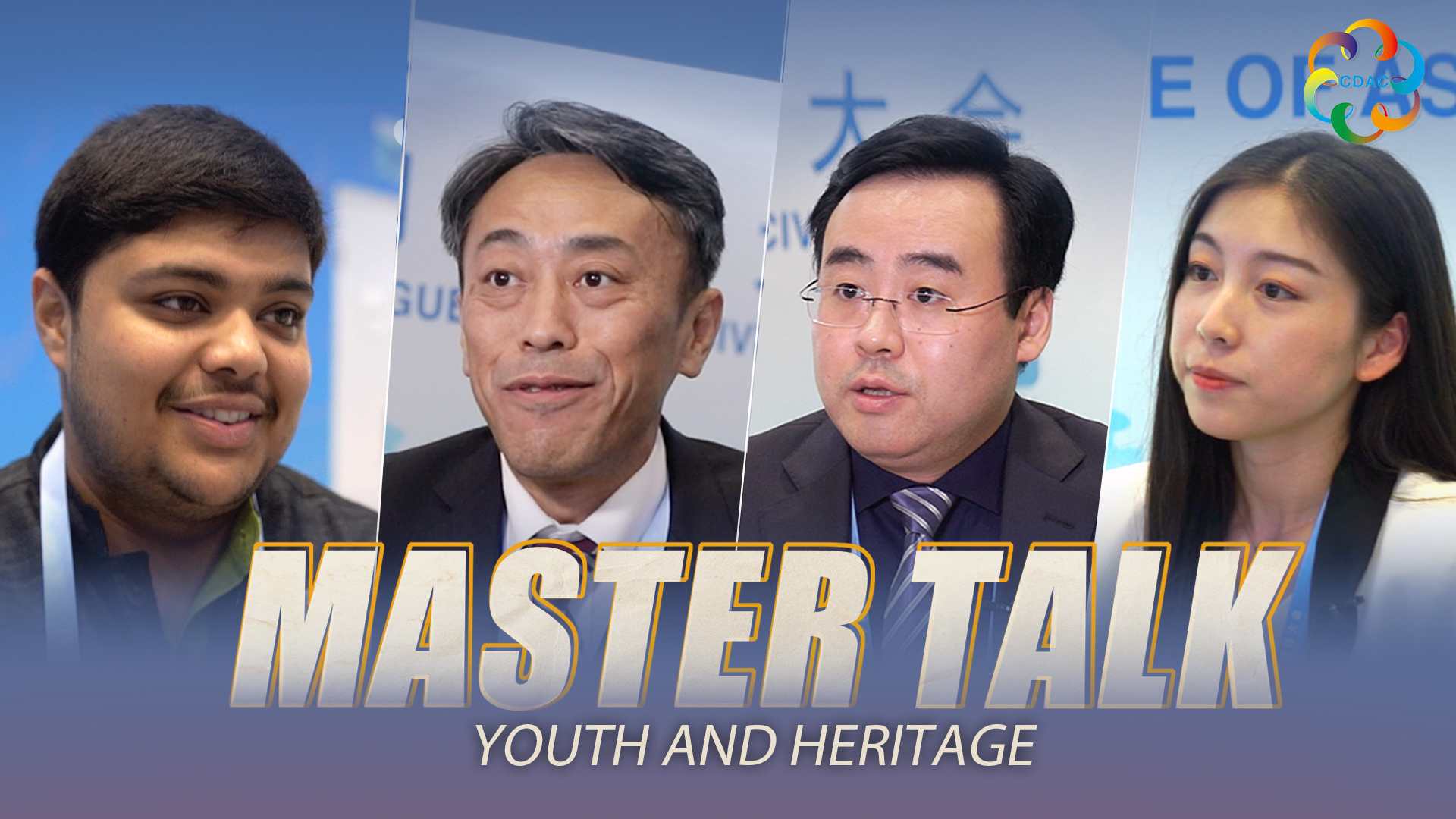
Culture
11:58, 19-May-2019
Asian youth foster intercultural understanding
Updated
12:21, 24-May-2019
By Wang Xiaonan
03:56

Editor's note: This is the fourth in the series of "MASTER TALK" interviews produced by CGTN Digital timed with the "Conference on Dialogue of Asian Civilizations" in Beijing.
Youth are often associated with inexperience, but when it comes to promoting culture, it's difficult to find more passionate advocates. During a youth dialogue for the Conference on Dialogue of Asian Civilizations in Beijing, young professionals and experts talked to CGTN reporters about how they can use culture and education to bridge the gaps in understanding among countries in Asia.
Tie Zheng, staff member of the Palace Museum
At the Palace Museum today, there were many people like me born in the '80s and '90s, young cultural workers. We have launched a series of programs, bringing many of our young experts and staff to brainstorm and make products inspired by the precious artifacts and architecture of the museum.
Young people are more inclined to have an open and tolerant mindset to various heritages from different cultures and religions. Moreover, they can use their strengths to participate in the fusion of different cultures.
Chen Rui, chairman of the board and CEO of bilibili
Traditional culture attracts young people. They will actively create and promote such a culture. Bilibili (a video-sharing website) has over 40 million users who are interested in traditional culture, 88 percent of whom are born after 1990 or 1995. They would use ethnic instruments to perform modern songs, use modern choreography to perform traditional dances, as well as reinvent and promote Han clothing to other youths also interested in traditional culture.
There are many aspects of Chinese philosophy that teach us how to resolve conflict. Through the strengthening of interpersonal exchanges, we can beef up mutual understanding, trust and progress between civilizations.
Himadrish Suwan, president of Confederation of Young Leaders of India
The major emphasis was on youth exchanges, that how the ancient part of the countries could forge an environment where the majority of the young people could indulge in the export and import of educational know-how as well as youth exchanges between the partner countries.
As you're aware, India is a young country where 65 percent of the population is youth. Recently we've also signed a memorandum of agreement with the All-China Youth Federation to promote the concept of practical diplomacy to further promote youth exchanges between India and China. I believe after hearing the speech of the president of China, this would give a new momentum toward our model to build an Asian century.
Daisuke Inoue, deputy director of International Affairs Office, Soka University
Young Japanese people are running cultural heritage through international organizations. They are participating in some activities in particular. This has the deepest message for peace.
Reporters: Zhao Junzhu, Mi Xue, Wang Xiaonan
Videographer: Wu Chutian, Qi Jianqiang
Video editor: Mi Xue

SITEMAP
Copyright © 2018 CGTN. Beijing ICP prepared NO.16065310-3
Copyright © 2018 CGTN. Beijing ICP prepared NO.16065310-3